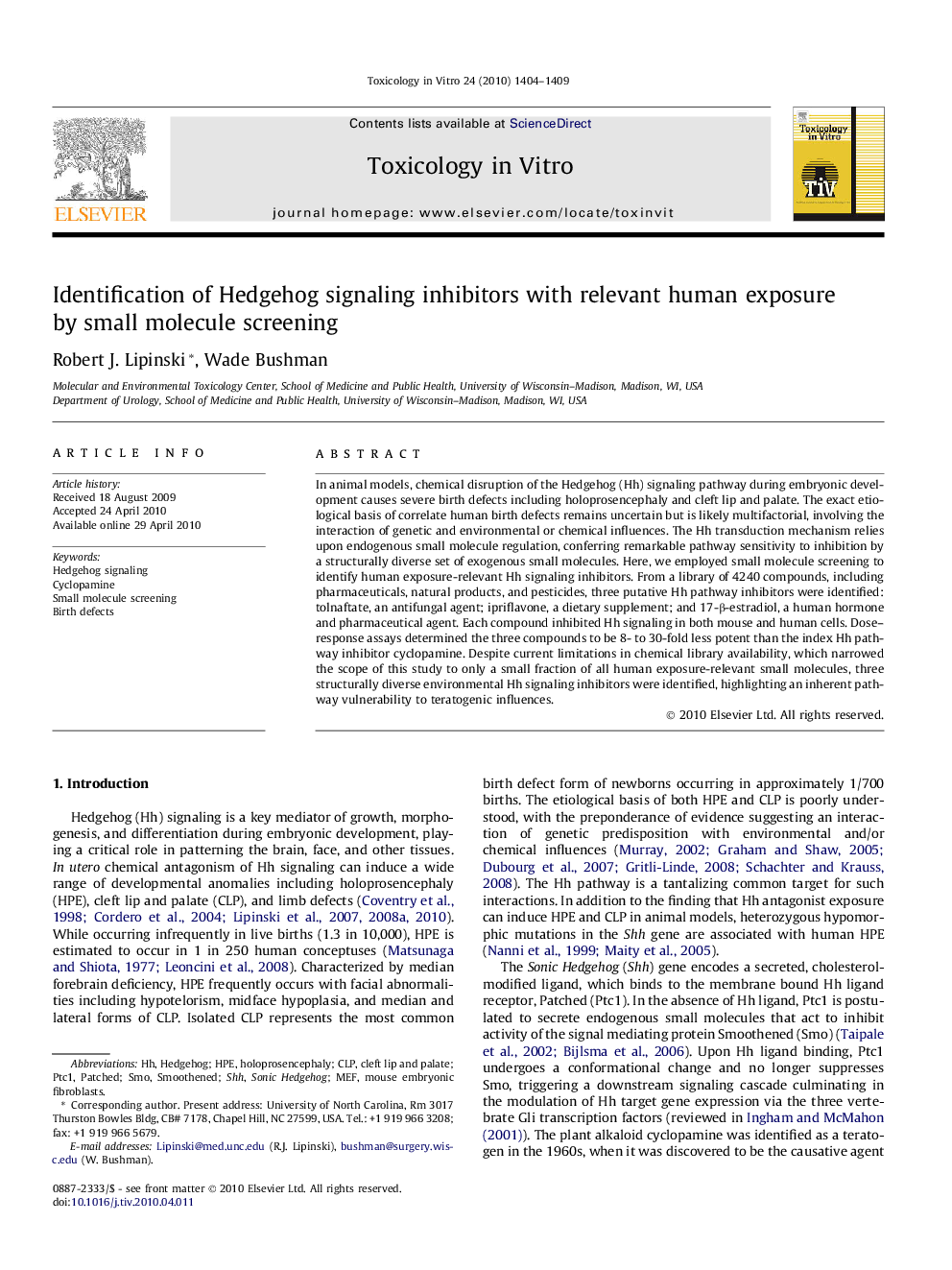| Article ID | Journal | Published Year | Pages | File Type |
|---|---|---|---|---|
| 2603250 | Toxicology in Vitro | 2010 | 6 Pages |
In animal models, chemical disruption of the Hedgehog (Hh) signaling pathway during embryonic development causes severe birth defects including holoprosencephaly and cleft lip and palate. The exact etiological basis of correlate human birth defects remains uncertain but is likely multifactorial, involving the interaction of genetic and environmental or chemical influences. The Hh transduction mechanism relies upon endogenous small molecule regulation, conferring remarkable pathway sensitivity to inhibition by a structurally diverse set of exogenous small molecules. Here, we employed small molecule screening to identify human exposure-relevant Hh signaling inhibitors. From a library of 4240 compounds, including pharmaceuticals, natural products, and pesticides, three putative Hh pathway inhibitors were identified: tolnaftate, an antifungal agent; ipriflavone, a dietary supplement; and 17-β-estradiol, a human hormone and pharmaceutical agent. Each compound inhibited Hh signaling in both mouse and human cells. Dose–response assays determined the three compounds to be 8- to 30-fold less potent than the index Hh pathway inhibitor cyclopamine. Despite current limitations in chemical library availability, which narrowed the scope of this study to only a small fraction of all human exposure-relevant small molecules, three structurally diverse environmental Hh signaling inhibitors were identified, highlighting an inherent pathway vulnerability to teratogenic influences.
